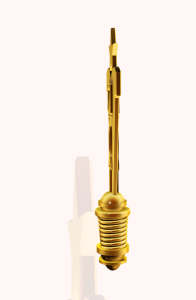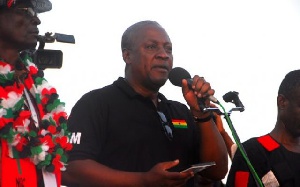It will cost the central government about GH¢ 50.5million to supply a minimum of 10 tractors to every one of the 216 district in the country to boost agriculture, B&FT analysis has revealed.
Delivering the highlights of the ruling National Democratic Congress’ manifesto for the December 7, 2016 polls at the State Banquet Hall on Tuesday, President John Dramani Mahama promised to supply a minimum of 10 tractors to every district in the country to boost agriculture if he wins the up-coming presidential elections.
The President said every district shall host a farming mechanisation center with a minimum of 10 tractors, all equipped with the full complement of implements such as harvesters.
B&FT analysis and checks with major tractor dealers such as RLD and Zoomlion online reveal that a simple brand new 4WD gear drive farm tractor costs between US$6,000-10,000 per unit. This excludes the cost of other components such as cultivators, plows, harvesters and threshers.
At a cost of about US$6,000 per tractor, a minimum allocation of 10 tractors promised by President Mahama will cost the state about US$60,000 per District. With a total of 216 districts in the country, it will require GH¢50.5million to keep the promise.
The President’s promise comes on the heels of calls to strengthen the agriculture sector to reduce the food import bill of the country.
The country imports about US$500million worth of rice per year, and about US$1billion worth of tomatoes and oil and chicken.
Indeed, the agricultural sector has been the back-bone of the Ghanaian economy , although it is augmented by revenue from gold and other precious metals and recently oil and gas.
The contribution of the agricultural sector has, however, being declining over the years, as it is beset with lack of inputs and high post-harvest loses as a result of the inability of farmers to transport their produce to major commercial centers due to bad roads.
The sector also lacks of post-harvest technological know-how; and insufficient central government support.
In 1992, the share of agric to the country’s Gross Domestic Product (GDP) was 23.6 percent, growing to about 41 percent in 1995. But the Ghana Statistical Service reports that the contribution of agric to GDP declined from 29.8 percent in 2010 to 22 percent at the end of last year.
Indeed, a report by the World Bank Group said about 21 percent of the Ghanaian population has moved out of agriculture to other more productive economic sectors over the 18-year period between 1992 and 2010.
At the same time, employment in industry and services grew from 38 to 59 percent -- making reallocation of labour the reason for more than one-tenth of all Ghana’s GDP growth over this period.
Click to view details



General News of Thursday, 15 September 2016
Source: B&FT

















